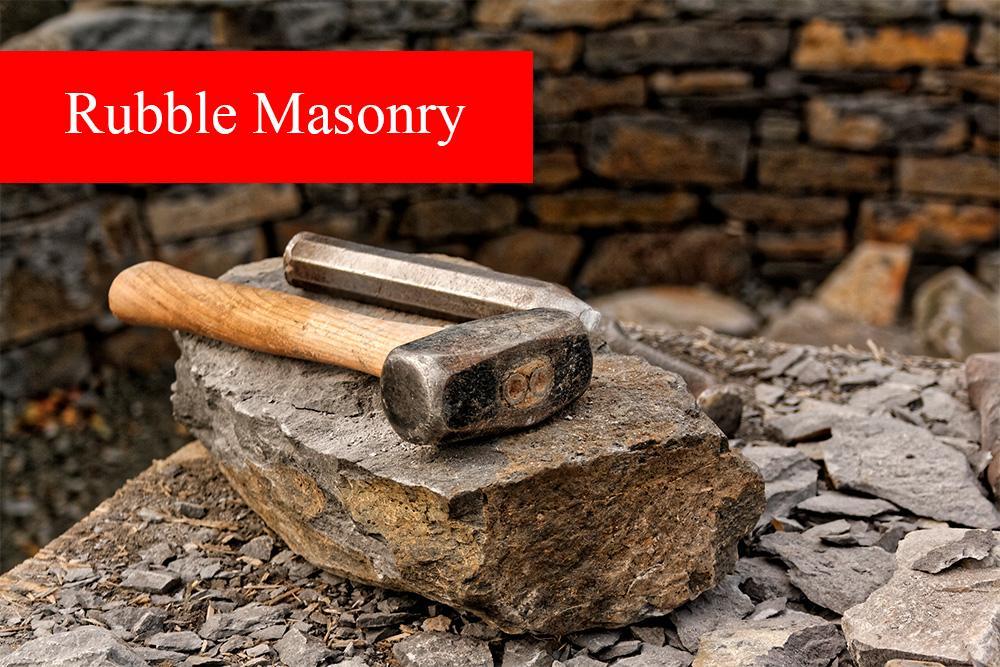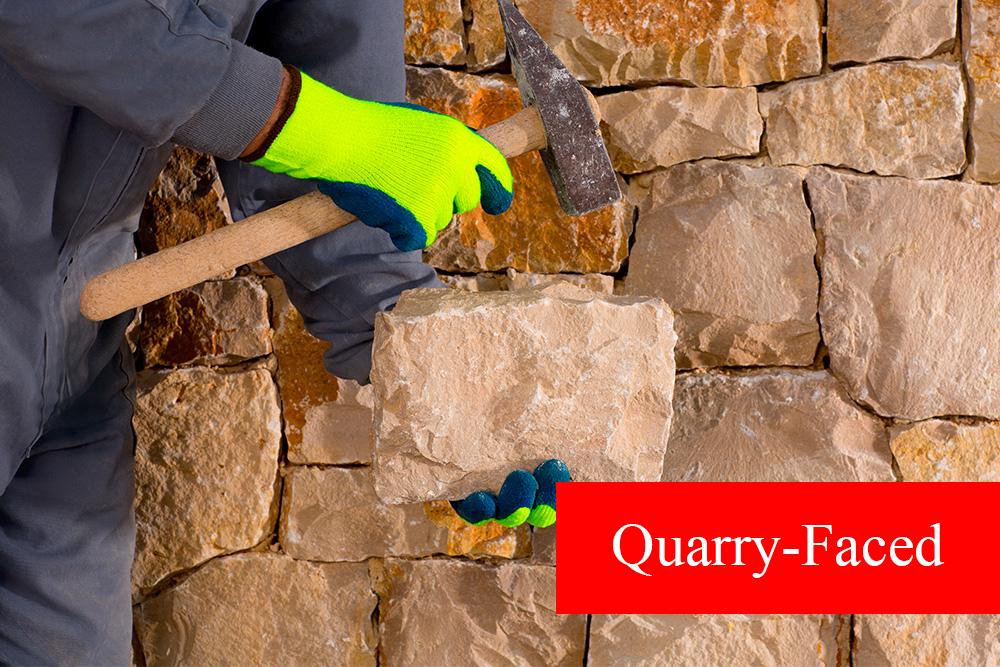Stone Masonry Techniques You Need To Know
Stone masonry techniques involve creating complex stone structures from individual stones, or “units,” held together with mortar. While the definition is simple and straightforward, the structures built with stones are intricate and diverse. Stone is perhaps the most durable building material ever used and is utilized in a wide range of applications, from constructing everything from bridges and fireplaces in ancient periods to building walls and foundations in modern times. The most common types of stones used for masonry construction are granite, marble, sandstone, limestone, and laterite.
Natural stones can be cut to size and shape or “dressed” by a skilled mason. Due to its strength, versatility, and durability, the stone is commonly used in commercial masonry projects. The stones used for masonry construction must be strong and free from imperfections such as cracks and cavities. The type of stone used for a particular project is subject to the availability of the stone as well as the type of structure. Depending on the application, some types of stone are best suited for the main construction of a structure, whereas others are best suited to purely aesthetic uses like veneer.
Mortar is a mixture of sand and water with cement or lime. Mortar is applied in a wet, paste-like form and adheres to the porous surface of the stones when dried to bond the stones together. The mixture of the mortar will depend on the color of the stone and the strength required to bond the stones together.
There are a variety of ways that stones can be cut and arranged, and each style has its own name and uses. Commercial masonry contractors divide stone masonry techniques into the two basic categories of rubble and ashlar masonry, each having several subcategories. Understanding these basic types of masonry techniques will give you a better understanding of the process and enable you to communicate more effectively with masonry restoration contractors. To help you gain a more clear understanding of the differences, the following is a primer on the different types of stone masonry:
A Variety Of Stone Masonry Techniques
Rubble Masonry

Rubble masonry uses raw or minimally processed stones, and the units are varied in shape and size. Rubble-style masonry works well for historic structures.
• Dry Rubble
Dry rubble is the most basic type of rubble masonry and uses carefully chosen raw, or hammer-dressed stones laid out so there are no large joints that could weaken the structure. Dry rubble takes its name from the fact it uses no mortar to hold the stones together. Instead, the precise placement and pressure from the weight of the stones hold the structure together.
• Random Rubble
Random rubble masonry can use undressed stone or stone that has been rough-dressed with a hammer. Stones are selected and arranged to evenly distribute the weight over a wide area while avoiding long vertical joints. This gives the structure a rustic but organized appearance.
• Polygonal Rubble
Polygonal rubble masonry was used by ancient civilizations such as the Mayans. This style uses stones dressed with a hammer made into irregular shapes that provide a varied and complex appearance. It can be used to build arches in doorways and bridges due to its ability to create strong interlocking joints.
• Square Rubble

Square rubble masonry is a step up from random rubble and can be used in multiple ways. Raw stones are dressed with a hammer or chisel to square off the corners. Square rubble is divided into coursed and uncoursed subcategories, with coursed being laid in rows with defined horizontal joints and uncoursed laid out in a random pattern with no defined vertical or horizontal joints.
Ashlar Masonry
Ashlar masonry uses carefully dressed stones precut to a specific size that provides the mason more control when creating joints. Ashlar masonry is typically more expensive because of the time involved in cutting the stones.
• Random Course
While most types of ashlar masonry arrange stones to create well-defined vertical and horizontal joints, the random-course style arranges stones indiscriminately without creating consistently spaced mortar joints.
• Rough-Tooled
Rough-tooled ashlar masonry uses stones with only the sides cut to a specific shape, with the front of the stone slightly dressed with a hammer and/or chisel. This provides a very strong but rustic looking structure due to the precise fitting of the stones.
• Quarry-Faced

Also referred to as rock-faced, quarry-faced ashlar is very similar to rough tooled but has an approximately one-inch wide chiseled-dressed strip around the perimeter of each stone. The remainder of the face of the stone is preserved in its natural state. However, the sides of each stone are cut to a specific shape.
• Chamfered Ashlar
Chamfered is one of the most refined masonry styles used for commercial masonry projects as the stones are precisely cut into evenly shaped blocks. The faces of the stones are also finished to a uniform texture with a small bevel around the face of the stone that creates a delicate look similar to brickwork.
• Fine-Tooled
This type of ashlar masonry uses stones that are precisely cut to a specific size and shape, allowing for strong, tight-fitting joints as thin as 1/8th of an inch. Since extra time is required to precisely cut and fit the stones, fine-tooled ashlar is often one of the most expensive types of masonry.
Besides Stone Masonry, Here Are More Types
• Block-in-Course Masonry
This style blends rubble and ashlar masonry techniques, using ashlar stones that are cut to a specific shape for the face while the stones behind the face are laid using rubble masonry techniques. Many people feel block-in-course is the best type of masonry as it provides the refined look of the ashlar style using the less expensive materials of rubble masonry.
• Fixer Masonry
Fixer uses a process where some type of fitting, such as a dowel or crimp, is used to “fix” the stone to the structure at the job site. Epoxy resins or modern cement are also used to attach face stones and are usually finished with a combination of grout and mortar.
• Stone Veneer
Veneers are typical flat stones no more than one inch thick and are used to add decorative appeal to a structure while protecting the surface. Veneer stones are mortared to the surface of the structure, and metal tabs are used to hold the stone in position.
• Slipform
This masonry method uses a combination of stonework and steel-reinforced concrete to create one of the strongest types of masonry structures possible. Concrete forms up to two feet tall are set up, and stones are placed into the forms. The forms are filled with concrete, and steel rebars are added. When the concrete has cured, the forms slide, or “slip,” upwards, and the process is repeated until the desired height is achieved.
With so many types of masonry construction, it can be hard to know which types are best suited to specific projects; this is why the assistance of a professional masonry service is invaluable. Additionally, if a structure needs repair, it is crucial to consult with experienced commercial masonry contractors to preserve the value and integrity of the structure. Epic Masonry Restoration has years of experience restoring stone masonry in St. Paul and the greater Minneapolis areas. Call Epic at 612-662-7420 or visit them online at EpicMasonryRestoration.com to schedule a free consultation.

